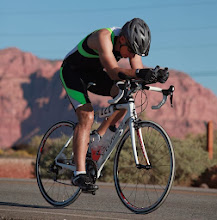
Next we visited a Catholic convent built over the site of an Inka ruin. Inside there were some Inka walls, but what caught my eye was this bronze copper relief. I love how the guides tell about all the theories that (us) scholars have about what pictures mean, but in my head I thought saw something on this relief that might just have a different interpretation than what I heard on the tour. See the two guys standing next to a roundish thing that maybe could be a pool of water? And then there is this straight "rod" leading past a tree? And then there is the cross pattern that our guide said represented a planted field, maby it is a building? Sound familiar? What do you think?

Our next stop was a bluff overlooking the city. On top of the city were the remains of an Inka settlement of some kind called Saqsayhuaman. At this site are the largest stones ever found in Inka construction. I found out later than instead of the 1/2 hour bus ride, there is a little path from near our hotel that goes right up the bluff and we could have walked it (steep hike) in about the same time it took to drive.



These ladies were posing for pictures and then asking for money. The flat hats indicate pure ketutua (Inka) blood. The hats with the higher crown indicate mixed "mestizo" blood.

A little way up the road is another Inka ruin site that has an underground temple. This alter is thought to have been part of a funuary (burial) complex.

At another stop up the road is the "Water Temple". A stream of pure water pours out from the temple walls.

Mid-August is the end of the winter dry season, and fields are being prepared for planting. This mountain side near the city was being burned in preparation for barley and wheat planting. Cusco is about 12,000 feet above sea level, so that mountain they grow crops on is between 13,000 and 15,000 feet elevation. The reason they can grow there is because it is on the equator and the days never get short; they get twelve hours of sun every day, every season.
The big finish of the day was my dinner of roasted "cuyo" or guinea pig. The guinea pig was oven roasted whole, then split in half the long way, and then my half was cut into thirds. It tasted like a cross between a chicken darkmeat and rabbit. Great taste, but not a lot of meat.




3 comments:
After the tour, I would have gone up to the guide and told him (or her) that you have an ancient record that may shed some more light on the copper relief. Bookmark the chapter on Lehi's vision of the tree of life--something like that.
Cool stuff.
Another great post. Your pictures are helping Brandon get excited about being there in 6 weeks. I'm not quite sure about the guinea pig meal though. Still wondering about the cost of that gold flute?
Jason
totally lehi's vision. so cool!
Post a Comment